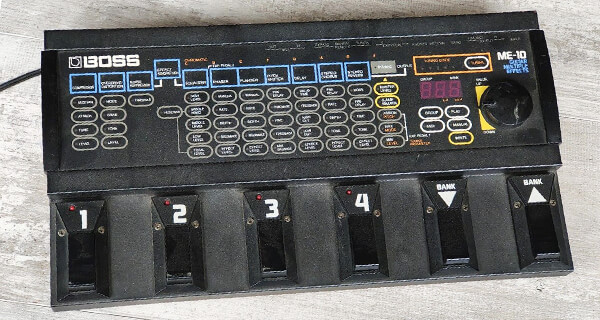Tube Amp Distortion Problem [Reason & Solved]
Tube amplifiers have long been revered for their warm and rich tone, but they are not without their quirks. One common issue that guitarists face is tube amp distortion problems. Whether you’re experiencing unwanted distortion on the clean channel or dealing with a quiet and distorted sound.
This guide will explore the reasons behind these issues and provide effective solutions to help you get the most out of your beloved tube amp. Let’s see why & reason for tube amp distortion problem.

# Table of Contents =>
Why Does My Amp Sound Distorted on the Clean Channel?
a) Tube Wear and Tear:
Tubes serve as the core component within a tube amplifier, and akin to any electronic element, they exhibit a finite lifespan. With the passage of time, tubes may undergo wear and tear, leading to a decline in their performance and the emergence of undesirable distortion. If you notice unexpected distortion in your amplifier’s clean channel, it could indicate that the tubes have reached the point where replacement is necessary.
Solution: Consult your amp’s manual for the correct tube replacement procedure and find quality replacement tubes from reputable brands.
b) Input Gain Levels:
High input gain levels can push your tube amp into distortion even on the clean channel. Make sure you’re not overloading the input with a guitar signal.
Solution: Reduce the guitar’s volume or consider using a buffer or attenuator pedal to control the input signal.
c) Faulty Preamplifier Tubes:

In some cases, only specific preamplifier tubes may be causing the distortion issue. Identifying which tube is problematic can help pinpoint the issue.
Solution: Swap out each preamp tube one by one to isolate the faulty tube and replace it with a new one.
Why Is My Tube Amp Quiet and Distorted?
a) Power Tube Problems:
The power tubes in a tube amp are responsible for amplifying the signal to a level that can drive the speaker. If one or more power tubes fail, it can result in a weak, distorted sound.
Solution: Replace the faulty power tubes with new ones. Be sure to match the tube type and bias them correctly (consult your amp’s manual for specifics).
b) Biasing Issues:
Incorrect biasing can lead to uneven tube performance and distorted sound. Biasing ensures that the tubes operate within their specified range, and if it’s not set correctly, you’ll encounter problems.
Solution: Consult a professional technician or your amp’s manual to properly bias your tubes.
c) Speaker Problems:

Sometimes, a distorted sound might not be due to the tubes but rather a damaged or worn-out speaker. Damaged speaker cones or voice coils can result in distortion.
Solution: Check your speaker for any visible damage. If necessary, replace the speaker with a suitable replacement.
d) Faulty Components:
Other components within the amp circuitry, such as capacitors and resistors, can become faulty over time. These issues can manifest as distortion in your sound.
Solution: If you suspect faulty components, seek the assistance of a qualified amp technician for diagnosis and repairs.
Proper Way to Solve: Tube Amp Distortion Problem –
a) Check Your Signal Chain:
Begin by verifying that your guitar and all cables in your signal chain are in good working condition. This includes your guitar cable, effects pedals (if used), and any other connections. Swap out cables to rule out any issues caused by faulty cables.
b) Tube Health:
Inspect the tubes in your amplifier. Ensure that they are seated securely in their sockets. If you have spare tubes, try replacing each one individually to identify if any particular tube is causing the distortion.
c) Bias Adjustment:
Consult your amplifier’s manual to understand how to adjust the bias properly. If you’re unsure about bias adjustment, consider having a technician do this for you.
d) Volume and Gain Settings:

Check the volume and gain settings on your amplifier. Lower the gain and see if the distortion lessens. Experiment with different settings to find the optimal balance between volume and distortion.
e) Speaker Condition:
Examine your amplifier’s speaker for visible damage to the cone or any other components. If you have access to another speaker, try connecting it to your amp to see if the distortion persists.
f) Input Impedance Matching:
Ensure that your guitar’s output impedance matches the input impedance of your amplifier. Mismatched impedance can cause distortion. Check your guitar’s specifications and your amp’s input impedance.
g) Effects Pedals:

If you use effects pedals, isolate each pedal one at a time to check if one of them is introducing the distortion. Ensure that the power supply for your pedals is stable and not introducing noise.
h) Power Supply:
Make sure your amp is plugged into a stable and clean power source. Avoid power strips or outlets that might be affected by other devices. Check the power cord and connections for any damage.
i) Environmental Interference:
Consider if there are any other electronic devices or sources of interference nearby that might be affecting your signal. Move your amp to a different location to see if the distortion changes.
h) Grounding Issues:
Verify that your amp is properly grounded. Poor grounding can introduce noise and distortion. Check the ground connection on your power cord and the grounding on your amplifier.
Conclusion:
In resolving a tube amp distortion problem, a methodical approach is essential. Begin by checking your signal chain and cable connections for integrity. Inspect and potentially replace any faulty tubes, followed by bias adjustment if necessary. Balance volume and gain settings to achieve the desired tone.
Assess the condition of your amp’s speaker and ensure impedance matching. Investigate effects pedals, power supply stability, environmental interference, and proper grounding as potential causes of distortion. If the problem persists, consulting an experienced amp technician is advisable due to the complexity and potential risks of tube amplifier maintenance.
FAQs –
Question: What causes distortion in a tube amp?
Answer: Distortion in a tube amp is primarily caused by over driving the tubes, which leads to a natural saturation of the signal. This results in harmonically rich, pleasing distortion.
Question: How do you fix amp distortion?
Answer: To fix amp distortion, you can start by adjusting the gain or volume settings to reduce the overdrive. If distortion persists, check the condition of the tubes, cables, and speakers. Bias adjustment, cable replacement, or tube replacement may be necessary.
Question: Do tube amps have more distortion?
Answer: Tube amps are known for their warm and natural distortion characteristics. They tend to produce more harmonic distortion compared to solid-state amps, which many musicians find desirable for their tone.
Question: Why does my amplifier sound distorted?
Answer: Amplifier distortion can occur due to various reasons, such as over driven tubes, high gain settings, damaged components, or issues in the signal chain. Carefully inspect and troubleshoot each potential cause to identify and address the distortion problem.
Last Updated on August 21, 2025 by Perry Garner


![Using 80 Ohm Headphones Without an Amp [Solved]](https://guitarinsighter.com/wp-content/themes/schema-lite/images/nothumb-related.png)